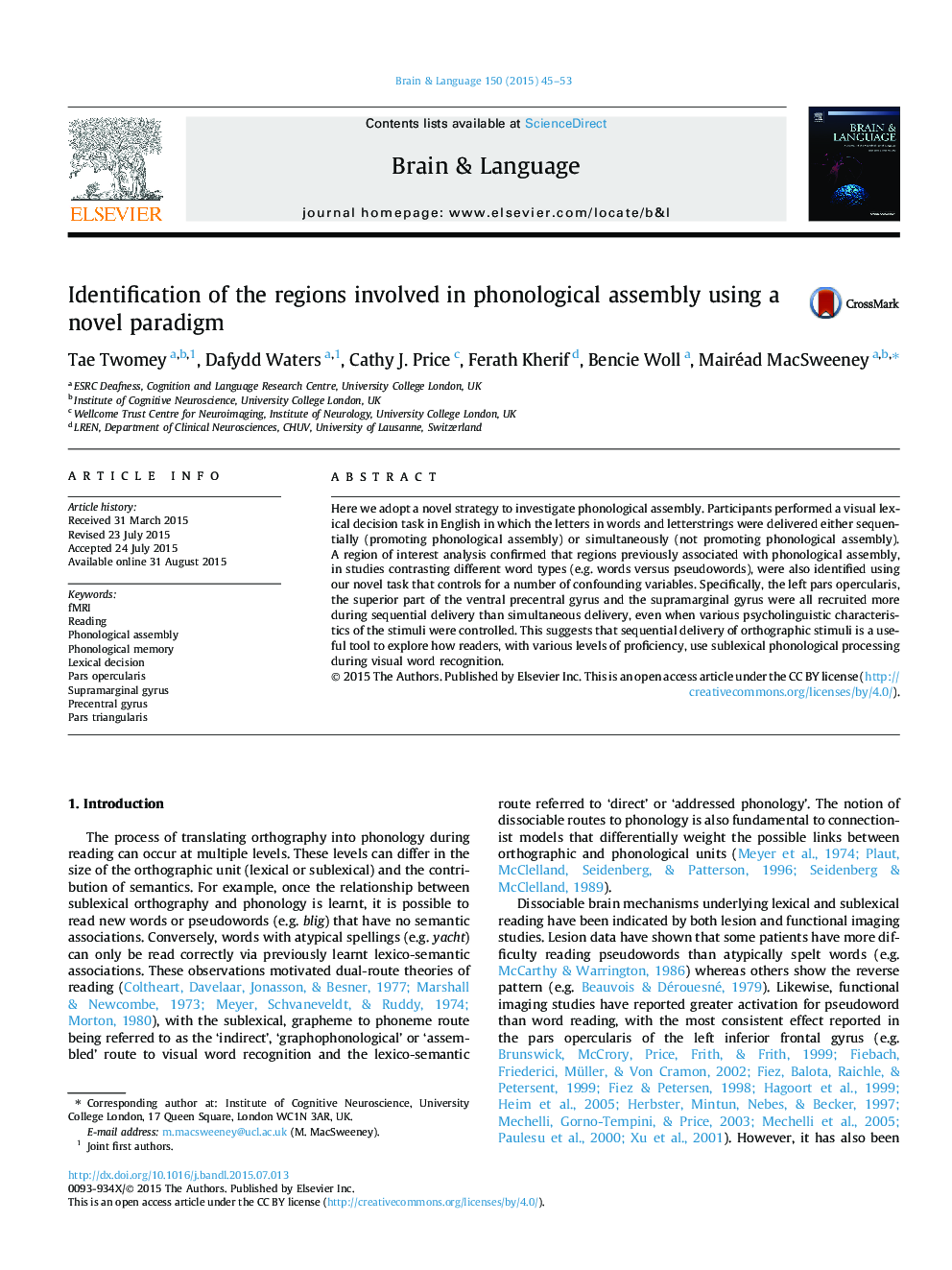| Article ID | Journal | Published Year | Pages | File Type |
|---|---|---|---|---|
| 7283997 | Brain and Language | 2015 | 9 Pages |
Abstract
Here we adopt a novel strategy to investigate phonological assembly. Participants performed a visual lexical decision task in English in which the letters in words and letterstrings were delivered either sequentially (promoting phonological assembly) or simultaneously (not promoting phonological assembly). A region of interest analysis confirmed that regions previously associated with phonological assembly, in studies contrasting different word types (e.g. words versus pseudowords), were also identified using our novel task that controls for a number of confounding variables. Specifically, the left pars opercularis, the superior part of the ventral precentral gyrus and the supramarginal gyrus were all recruited more during sequential delivery than simultaneous delivery, even when various psycholinguistic characteristics of the stimuli were controlled. This suggests that sequential delivery of orthographic stimuli is a useful tool to explore how readers, with various levels of proficiency, use sublexical phonological processing during visual word recognition.
Keywords
Related Topics
Life Sciences
Neuroscience
Biological Psychiatry
Authors
Tae Twomey, Dafydd Waters, Cathy J. Price, Ferath Kherif, Bencie Woll, Mairéad MacSweeney,
